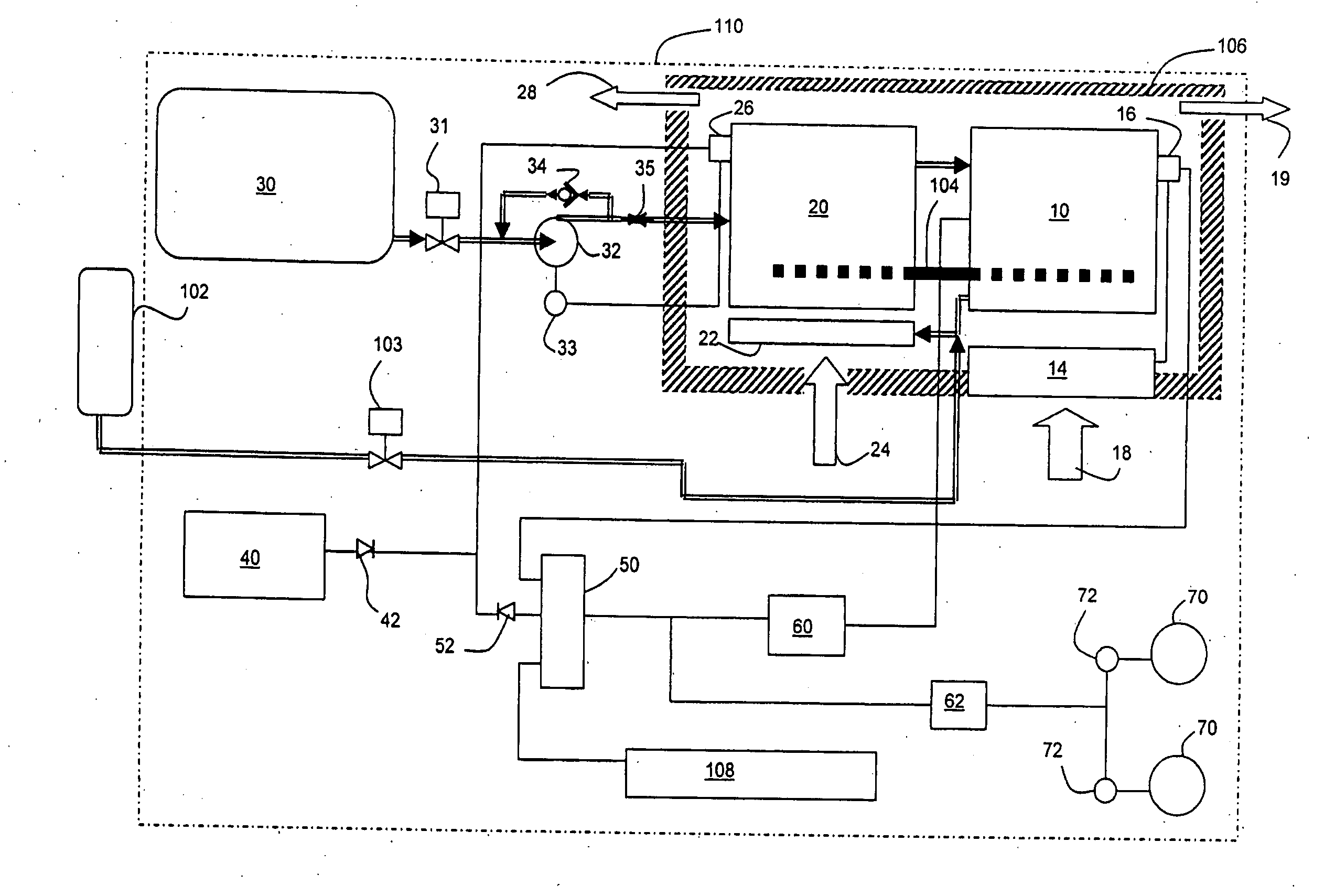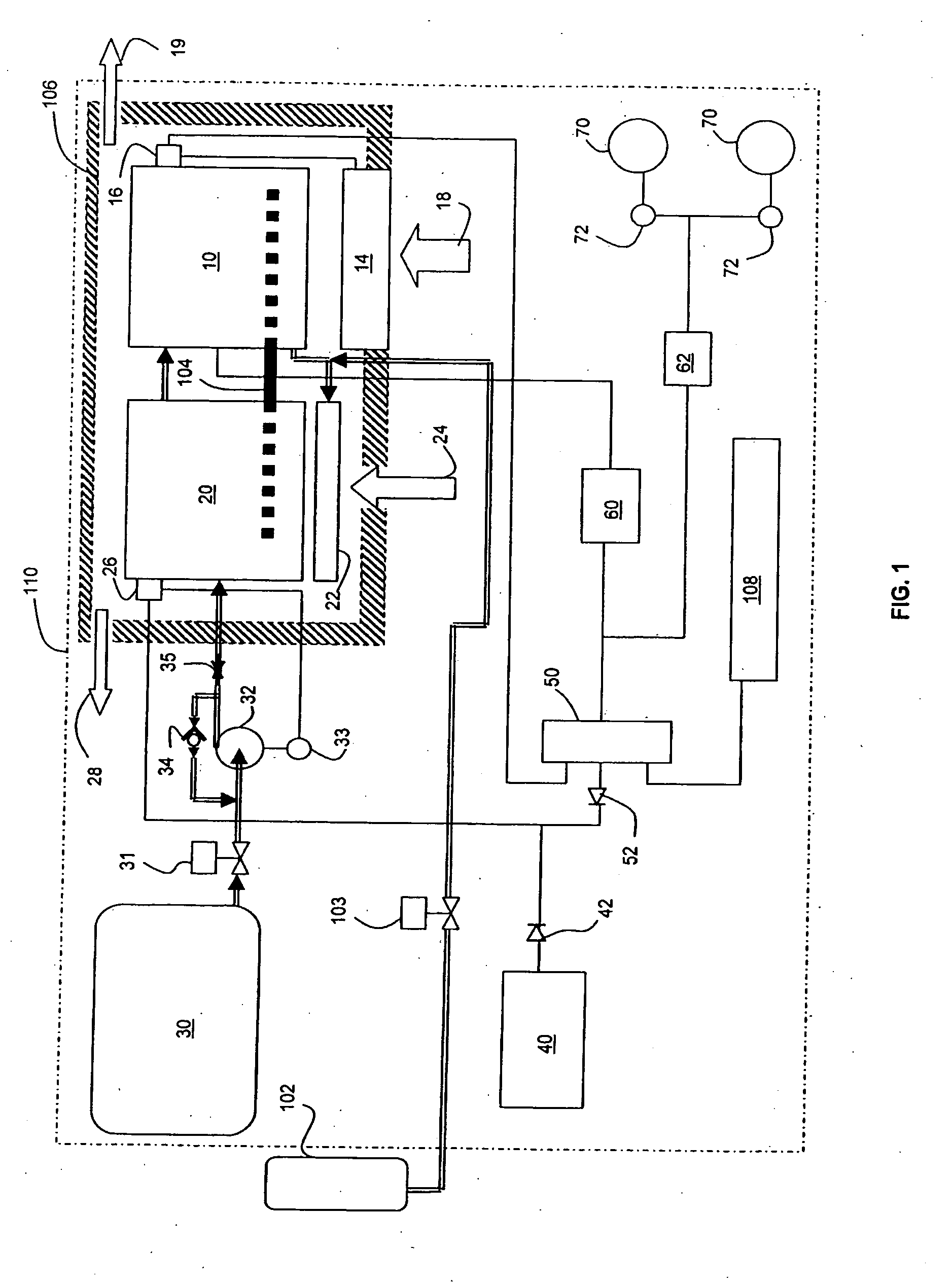Fuel processor for fuel cell systems
a fuel processor and fuel cell technology, applied in sustainable manufacturing/processing, electrochemical generators, lighting and heating apparatus, etc., can solve the problems of shocks that can only carbon monoxide cannot be used as fuel, and the reaction to the heating process is relatively slow, so as to achieve a small temperature gradient
- Summary
- Abstract
- Description
- Claims
- Application Information
AI Technical Summary
Benefits of technology
Problems solved by technology
Method used
Image
Examples
Embodiment Construction
[0032]As used herein, the term “about” when used in reference to a numerical value means the indicated numerical value +10% of that value.
[0033]An exemplary embodiment of the invention is shown schematically in FIG. 1, the system comprising fuel cell stack 10, at least one fuel cell cooling fan 14, fuel cell thermal switch 16, fuel cell air feed 18 and fuel cell combustion exhaust duct 19. The system further comprises fuel reformer 20 operatively coupled to fuel cell stack 10, fuel reformer burner 22, fuel reformer air feed 24, fuel reformer thermal switch 26 and fuel reformer combustion exhaust duct 28. One or more heat pipes 104 pass from the vicinity of the fuel reformer burner 22 into the fuel cell stack 10. Fuel reformer 20 is fed fuel from fuel reservoir 30 via fuel reservoir shut off valve 31, fuel reservoir fuel pump 32, fuel pump switch 33, fuel check valve 34 and fuel feed orifice 35.
[0034]All of the system's components with the exception of a fuel tank 102 for supplying f...
PUM
| Property | Measurement | Unit |
|---|---|---|
| interior diameter | aaaaa | aaaaa |
| interior diameter | aaaaa | aaaaa |
| temperatures | aaaaa | aaaaa |
Abstract
Description
Claims
Application Information
 Login to View More
Login to View More - R&D
- Intellectual Property
- Life Sciences
- Materials
- Tech Scout
- Unparalleled Data Quality
- Higher Quality Content
- 60% Fewer Hallucinations
Browse by: Latest US Patents, China's latest patents, Technical Efficacy Thesaurus, Application Domain, Technology Topic, Popular Technical Reports.
© 2025 PatSnap. All rights reserved.Legal|Privacy policy|Modern Slavery Act Transparency Statement|Sitemap|About US| Contact US: help@patsnap.com



